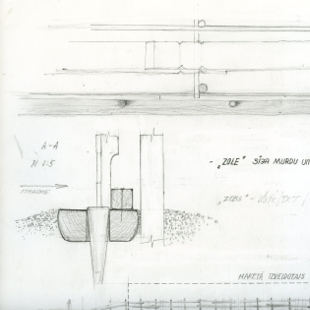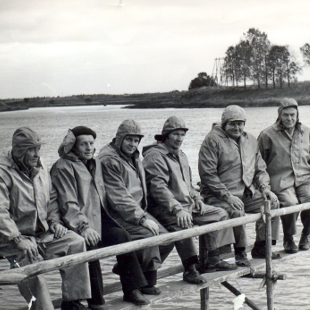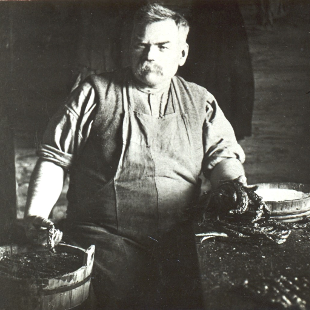
The catch of lampreys by means of a weir is an ancient fishing method, which was also applied in the Daugava, Venta and Gauja rivers earlier, but nowadays - only in the Salaca River and the Svetupe River.
In the scientific archive of the Department of Ethnography of the Institute of Latvian History we can find the testimony of Augusts Bisenieks born in Salacgriva in 1877, who in 1958 said: From the days of forefathers the lamprey pots, have been put into the river in autumn. The rent was paid for the fishing on the river to the baron.1
In 1867 there were 14 farms fishing for lamprey in the Vecsalaca parish - the weirs belonged to Jaunliepini, Jaunzagmezi, Klavini, Koski, Kesteri, Lekungi, Linurgas, Mellurgas, Pazekalni, Rammnieki, Tirummeiniki, Vecnacki, Veczagmezi and Jeceni2. You can see the model of the modern weir right at our museum.2
The farmer, without the permission of the manor administration, was forbidden to change the places of casting and dredging the net or the location of the weir. The duty for the fish that was caught were collected ever since 1253.
1 E 13, 1801, Salacgriva. Quoted from Cimermaņs S. Fishing and fishermen in Latvia in the 19th century. R.: The herald of the Latvian Academy of Sciences, 1998. p. 162.
2 Cimermaņs S. Fishing and fishermen in Latvia in the 19th century. R.: The herald of the Latvian Academy of Sciences, 1998. chart 18, p. 76, 77.



